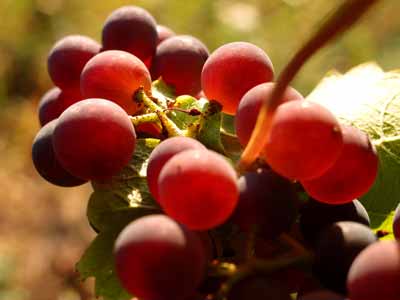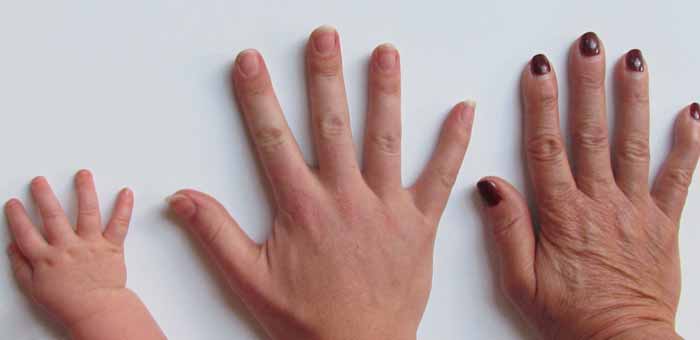The future region Languedoc-Roussillon / Midi-Pyrénées boasts an average solar radiation of about 1550 kWh / square meter per year, with a high peak at 1700 kWh / m2 / year on the heights of the Cerdanya and a minimum of 1250 kWh / m2 / year over the foothills of the Pyrenees exposed north in the Midi-Pyrénées region.
This effectively means that a photovoltaic system installed on this latitude will receive an average irradiation of 1550 kWh / m2 / year, and convert into electrical energy (kWh) a percentage of that radiation, because any system still generates some losses.
The production of a photovoltaic system is given by the following equation :
Eélec = Hi x S x η
 • Elec [kWh / fr]: electric energy produced in system output over one year
• Elec [kWh / fr]: electric energy produced in system output over one year
• Hi [kWh / m2.an]: global irradiation received in terms of modules over 1m2 for a year.
• S [m2]: surface of photovoltaic modules field
• η: overall system performance
Therefore, if we take the photovoltaic field of Ortaffa (66560) as an example, we know that:
• The production of electrical energy is about 35 million kWh / year
• The size of this field is 250 000 m2,
• The global irradiation gets per m2 is 1550 kWh / m2 / year
So we can assume that the efficiency of the installation is more or less:
Eélec Hi x S x = η
⇔ 000 000 35 = 1550 x 250 x 000 Yield ⇔ yield = 35 000 000 / (1550x 250 000) ⇔
35,000,000 / 387,500,000 = 0.09 that means 9%.
It is said that the annual overall consumption of electricity for a household (source from INSEE) is around 5500 kWh / year. This means that the photovoltaic field of Ortaffa, with a power of 25 MWp (megawatt peak) supplies about 6,400 households, which make more than 15 000 people. Knowing that the area impacted by the panels is 25 hectares, only 3% of the area of this town (8.5 km2 or 850 ha)!

If we make a projection about the electricity total need of the community of the Côte Vermeille’s residents, which includes 54 614 people for 292 km2 (29 200 hectares). The same technology uses in Ortaffa could provide this area entirely. The photovoltaic field whose panels would cover about 90 hectares for a peak power at 90 MWp (54 614/15 000) x25 = 91 MWp MWp, that makes only 0, 3% of the land’s area.
Extrapolating, the future large region Languedoc Roussillon / Midi Pyrénées, strong of its 5.8 million people and an area of 72 724 km2, should devote the same technology as Ortaffa. 97 km2 (0,13% of the area) would be used to build a photovoltaic field big enough to provide with electricity all its residents.
It must be pointed out that the technology used in Ortaffa has benefited and continues to benefit from significant improvements of the solar panels performance just like all other photovoltaic technologies. So the necessary implementation space today will necessarily be reduced tomorrow.
Consequently, in France, it is estimated that the annual total of electric energy consumption (résidents+ services+ industries) is currently about 460 TWh (terawatt hour). This amount of energy could be provided by photovoltaic farms set up in the southern part of France with a total power of 315 GWp making a zone of panels 2015 PV technology 210 000 hectares, or 2 100km2. (2015: average peak power photovoltaic panels per m2 = 150 Wp, 1.5 MWp /Ha). If this figure is relative to the huge area of Languedoc-Roussillon / Midi Pyrénées, this would represents only 2.9% of its area!!!
Some people will say: “but the production of photovoltaic energy is cyclical, it occurs only in the daytime and not at night, when electricity needs is permanent”; to this we can now answer:
• The storage technologies of photovoltaic energy produces during the day are now at the industrial phase and this process is already being dealt in some countries with regard to housing, and will be very soon available to everything related to industry and services worldwide.
• To photovoltaic energy are added all the other renewable energies, which have the advantage of being less cyclical, or whose production cycles overlap and provide an economic coherence to electricity from renewable sources; include, for our region, strong energy fields from the forest and agricultural by-products (biomass), geothermal, hydro, wind, heat pumps…
• The Renewable energies do not contribute or maybe just a little bit to global warming, caused by the consumption of fossil fuels. This release of CO2 generated by the combustion of fossil fuels (coal, oil…) is creating serious environmental and agricultural problems in our wine region. Here are few examples only linked to viticulture:
Following the slump and qualitative wines crisis in the 1980s, the whole Languedoc-Roussillon region has started to adapt to its Terroir quality varieties of grape, which fit perfectly to this area. Previously the industrial revolution of the XIX century had repulsed these varieties to others wine regions, preferring, for purely economic reasons, highly productive varieties of poor quality rather than qualitative grapes with less yield. Winemakers in southern France have therefore replaced the grape varieties planted at that time (Carignan, Aramon, hybrid variety) by varieties called “Noble” (Syrah, Grenache, Mourvèdre for PDO and Merlot, Cabernet Sauvignon, Chardonnay, Sauvignon Blanc for local wines). That is how a real qualitative revolution has occurred and has been recognized and appreciated by the international market. We got our acclaim in the early 2000s, when all wine professionals unanimously regarded our region as an emerging territory in terms of quality.

However, these noble grape varieties, which allowed to get wine perfectly balance few years ago are now directly threaten by climate change. Indeed, Syrah was harvested on September 10 in 2000 at 12,5/13 ° alcohol in power, that was at perfect maturity: sugar balance / acidity, perfect phenolic maturity *
* Phenolic compounds are essentially concentrated in the seed and the skin:
Seeds (64%)> skin (30%)> juice and flesh (6%)
 The phenolic maturity is mainly detected by tasting the grapes while maturity is getting ready it allows to determine the correct harvest date without relying only to the sugar/acidity balance. These technics are done every years to avoid harvesting grapes too early or too soon that could give an astringent wine, because of a lack of phenolic maturity on grapes. Skins and seeds, are mixed to the must during fermentation so if the grapes wasn’t harvested at the good period we could end up with a wine bitter and harsh.
The phenolic maturity is mainly detected by tasting the grapes while maturity is getting ready it allows to determine the correct harvest date without relying only to the sugar/acidity balance. These technics are done every years to avoid harvesting grapes too early or too soon that could give an astringent wine, because of a lack of phenolic maturity on grapes. Skins and seeds, are mixed to the must during fermentation so if the grapes wasn’t harvested at the good period we could end up with a wine bitter and harsh.
For information, wine phenolic is:
• Condensed tannins (proanthocyanidins or) pips are extracted during maceration. They provide the wine its character tannic, astringent, “structured”.
• Anthocyanins (or anthocyanins) pigments are located in the skin of black grapes. They are responsible for red-ruby-purple colour of grapes and wine. They are formed by glycosidation of 5 unstable anthocyanidols: malvidin, delphinidol, pétunidol, paeonidol and cyanidol (aglycone + 1 or 2 glucose molecules). They can then be esterified with coumaric acid or acetic acid. Around thirty stable anthocyanins were found in grapes and wine.
• Flavonols play a protection role against UV rays in the berries skins. They meet mainly glycosides form.
But since few years, precisely because of global warming, we have less precipitation (shorter but even stronger) plus higher temperatures, and this from the beginning of the vegetative period of the vine, which runs from April to October. This causes a large disparity between the alcoholic maturity and phenolic maturity. Nowadays Winegrowers have to wait an alcoholic potential level as high as 15 ° power AP to get a proper phenolic maturity; this lead to unbalanced wines, too rich in alcohol, hot, with not enough acidity to ensure good conservation. And the phenomenon will get worse year by year; thus, for the 2014/2015 harvests in our Pyrenees-Orientales, it was not uncommon for Syrah grapes to blithely exceed 16 ° potential alcohol in mid-September. While these potential degrees are usually the preserve of grapes Grenache and Muscat, the Natural Sweet Wine Terroirs that are the valleys of Rivesaltes or Banyuls terraces!
 What should we do?
What should we do?
Start a second campaign “adaptation of the vineyard” to global warming, replacing our qualitative varieties to other varieties from Lebanon, Cyprus, Sicily and Maghreb? It would last at most 35 more years and eventually destroy our wine heritage, built and supported by an entire generation of winegrowers, moreover European subsidies to large reinforcements.
No, we must fight together against this scourge of global warming using now the existing complementarities between the Renewable Energy (ENR) and agriculture without even thinking of destroying what we have been building since 35 years.
At the same time, following the climate change and new cultural constraints it engenders, compounded by European regulations far away from the concerns of the rural world, wasteland on agricultural land are increasing; especially on our border territory, which resulted, at regional level:
• A young vocation crisis to settle in agriculture field and to take care of our territories.
• A massive uprooting of vineyards, orchards and vegetable areas, due to the appearance of parasites and viral diseases and their spread, really expensive to take away (Sharka in orchards, golden flavescence on the vineyard to name just two)
It is time to ask ourselves the right questions: the farmer who meets difficulties to get paid for the real value of its productions delivered to a global market necessarily unfair. Would not it be the right time to offer him the possibility of coexistence between agriculture and renewable energy? It is urgent because he is the guarantor of both the sustainability of our landscapes as well as our cultural heritage.
 Some people will say: but we have enough potential areas to install solar energy on roofs! However the cost of photovoltaic on roofs is and will remain, for technical questions, at least 30-40% more expensive than photovoltaic panels set on the ground. And the photovoltaic ground is now economically very close to the “grid parity”. That means the energy cost to the taxpayer will not be more expensive providing electrical energy from a solar power plant than from a nuclear power plant, unlike the danger, which is going to be highly reduced.
Some people will say: but we have enough potential areas to install solar energy on roofs! However the cost of photovoltaic on roofs is and will remain, for technical questions, at least 30-40% more expensive than photovoltaic panels set on the ground. And the photovoltaic ground is now economically very close to the “grid parity”. That means the energy cost to the taxpayer will not be more expensive providing electrical energy from a solar power plant than from a nuclear power plant, unlike the danger, which is going to be highly reduced.
There was a time, to regulate the maturity of the vines and avoid putting “all your eggs in one basket”, (rural proverb), the farmer intercalated fruit trees in the heart of the vineyards among different grape varieties to standardize their maturity and overcome the climatic changes affecting certain varieties per year and not others.
Without wanting to revolutionize the agricultural world, there are now renewable energy systems suitable to be installed in cultivated plots, which could provide the operator with regulation of the maturity of his crops and increased his income only real source of investment and sustainability of its operations. This increase income per hectare would allow him to hire new employees and focus on promoting his production. This development would perpetuate the reputation of our terroirs that we have spent 35 years to build. We object to the fact that global warming would force us to abandon the excellent adaptation of our noble grapes to our wonderful Earth to benefit most northern wine regions, assuming that they are willing to give up, in Burgundy, Pinot to Syrah, in Champagne their Chardonnay and Pinot Meunier to Marsanne, Grenache white and black.
This would not make any sense, all wine regions facing similar problems, would lose their identity as the strength and reputation of French wine is based on the correlation between a territory and the grape varieties grown there. In France, the location is emphasized, not the grapes varieties, so we do not say:
- Grenache, but Banyuls,
- Pinot Meunier and Chardonnay, but Champagne,
- Merlot or Cabernet Sauvignon, but Bordeaux
- Pinot, but Burgundy
- Sauvignon Blanc, but Touraine
- Cabernet Franc but Saumur-Champigny
- Syrah-Grenache Mourvedre but Roussillon or Languedoc
- Syrah, but Côtes du Rhône Côte-Rotie
- Mourvèdre but Bandol
And finally, we do not say Grenache (Black, Grey, White), Syrah, Mourvèdre, Cinsault, Clairette (white, rose), vaccarèse, bourboulenc, Roussanne, counoise, dormouse, Picpoul (white, gray, black), Picardan and black terret but Chateauneuf du Pape,
This list is certainly incomplete, but the wealth and reputation of French wine comes from this complex process that combines the qualities of a terroir, a climate, to one or more varieties. We are known for that elitism, and it makes our national wealth, as well as other speciality such as aircraft, medicine, cuisine or tourism.
Not taking this problem into consideration would mean losing the notion of terroir and AOC, and consequently be confronted for the wine like for the rest of our economy to global competition! Oversimplification, for the only property of agri food multinationals, but certainly not for cultivation nor taste.
Moving back to more logic and pragmatism: not putting all our eggs in one basket to fight against climate change and ensuring good living for future generations.

